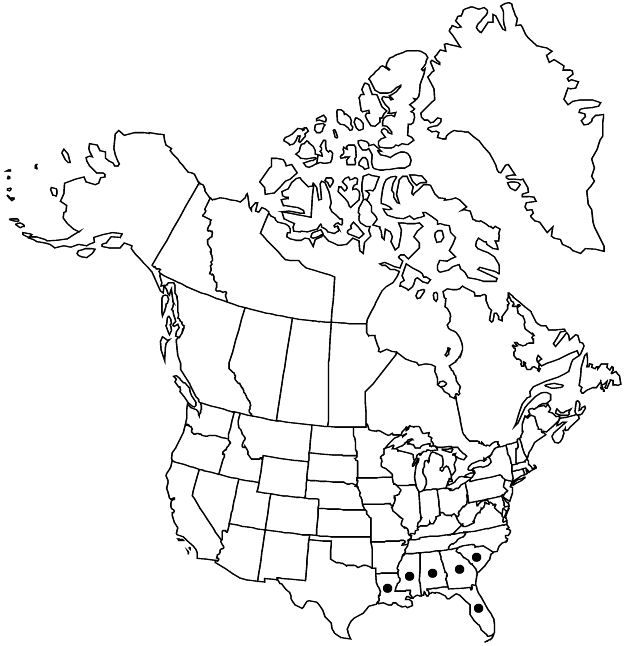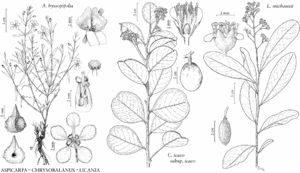Difference between revisions of "Licania michauxii"
J. Arnold Arbor. 51: 526. 1970.
FNA>Volume Importer |
FNA>Volume Importer |
(No difference)
| |
Revision as of 18:20, 24 September 2019
Shrubs to 0.3(–0.5) m, forming colonies, strongly rhizomatous; aerial stems arising in clumps near growing tips of rhizomes. Twigs maroon to dark brown, densely hairy proximally, becoming sparsely hairy distally, lenticels round to elliptic, pith cream; bark not striate. Leaves persistent or deciduous; stipules cuneate, 1–1.5 mm, margins entire or remotely glandular-toothed; petiole 2–2.5 mm; blade oblanceolate, lanceolate, or narrowly oblong, 5–8 × 1.7–3 cm, length 2.5–3.5 times width, base cuneate, apex rounded (obscurely mucronate to mucronulate), surfaces glabrous except for scattered hairs along abaxial midvein. Thyrses: rachis densely white-pubescent; bracteoles caducous, sessile, ovate, 1.8 mm (base auriculate). Flowers: hypanthium 4 mm; sepals triangular, 1.5 mm, both surfaces densely hairy; petals white, narrowly spatulate, 1.5 mm, margins entire basally, erose to lobed apically, apex obtuse. Drupes yellow-green tinged with red, becoming pink to white when mature, 2–2.5 cm.
Phenology: Flowering Feb–Sep; fruiting Mar–Oct.
Habitat: Pinelands, open scrub, primarily well-washed sandy soils in disturbed areas such as roadsides.
Elevation: 0–10 m.
Distribution

Ala., Fla., Ga., La., Miss., S.C.
Discussion
Licania michauxii is a common species of roadsides and open woods on the outer coastal plain of the southeastern United States. Leaves are persistent in the southern part to deciduous in the northern part of its range. The common name ground-oak reflects superficial similarity to running oak (Quercus pumila), a sympatric species. Vegetative plants of the two species may be distinguished by hairs on leaves: stellate hairs are found on the oak; simple unbranched hairs occur on L. michauxii.
Selected References
None.
